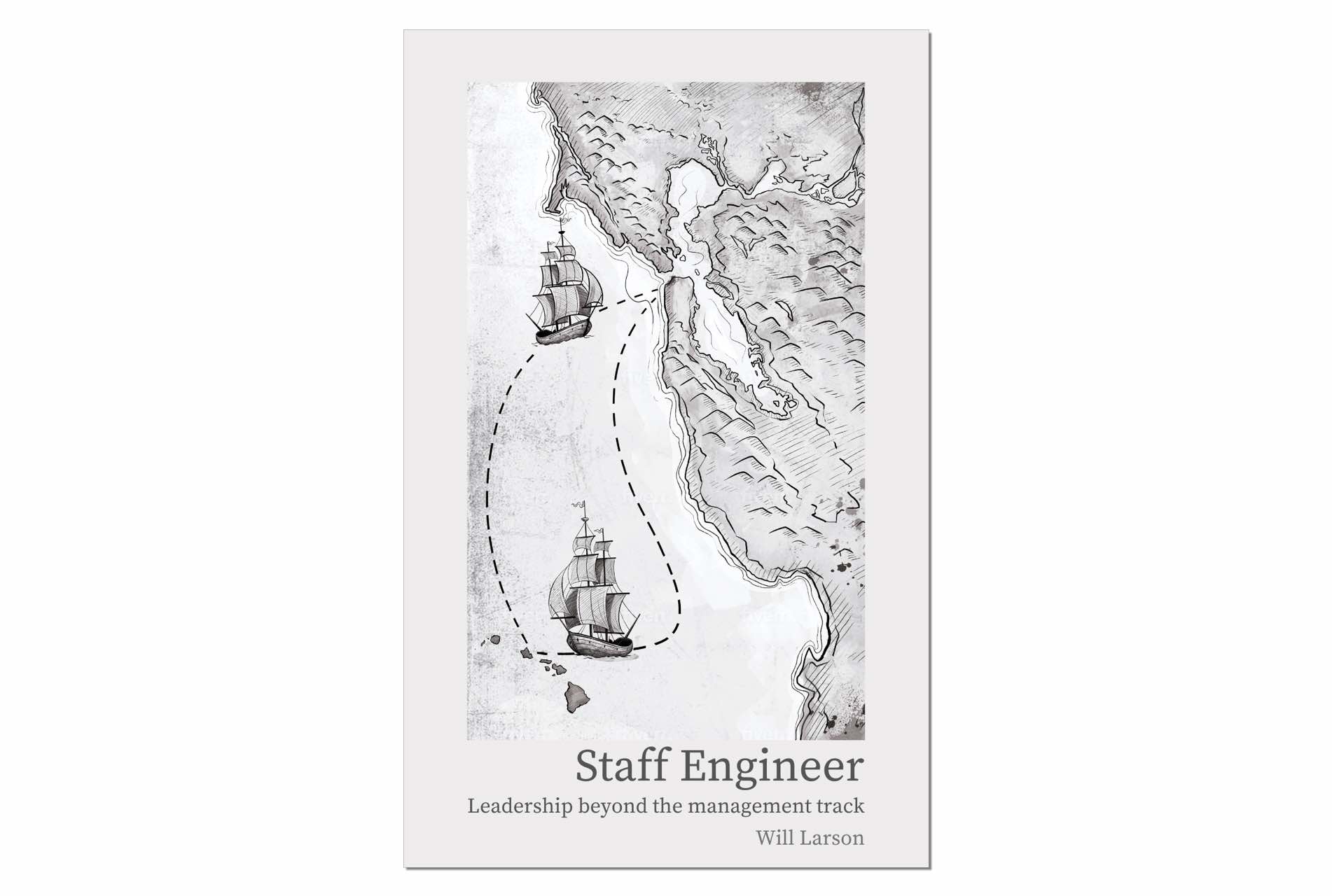Introduction
At most technology companies, you’ll reach Senior software engineer, the career level for software engineers, in five to eight years. At the career level, your company’s career ladder won’t require that you work towards the next promotion; being promoted further is an exception rather than expected. This is also when many engineers are first given an opportunity to move into engineering management.
Over the past few years, we’ve seen a flurry of books unlocking the engineering management career path, like Camille Fournier’s The Manager’s Path, Julie Zhuo’s The Making of a Manager, Lara Hogan’s Resilient Management, and even my own An Elegant Puzzle. The engineering management career isn’t an easy one, but there are maps available to help navigate it.
What if you want to advance your career without becoming an engineering manager? Many companies will answer that question by excitedly telling you that they have a two-track software engineering career path. Engineering management is the first track, and the second is technical leadership. The technical leadership track is populated by titles like Staff engineer and Principal engineer. That this second track exists at all is a sign of progress, but there’s much work left to make it both accessible and impactful.

This book standardizes on the most common sequence of titles: going from Senior to Staff, followed by Principal, and then Distinguished. It uses the term Staff-plus as an overarching label for Staff, Principal, and Distinguished titles. Many companies only have a subset of these titles, slowly adding more as their team grows, but companies that only have one technical leadership title almost always use Staff. A few companies use an alternative sequence, but they’re in the minority.
There is pervasive ambiguity around the technical leadership career path, making it difficult to answer seemingly simple questions about Staff-plus roles. If you’re a Senior engineer and want to reach Staff engineer, what skills should you develop? Are technical abilities alone sufficient? How do most folks move into one of these roles? What is your manager’s role in helping you along the way? Will you enjoy being a Staff engineer, or will you toil for years to reach a role that doesn’t suit you? This book will help you answer all those questions.
Given the broad confusion around these roles, I knew I couldn’t write this book relying too heavily on my own experience. More than a dozen Staff-plus engineers across the industry were kind enough to share their experiences of reaching and operating in a Staff-plus role. Their wisdom has created something richer in nuance, breadth, and perspective than I could have ever written on my own.
If you’re already in a Staff-plus role, I hope these writings will energize you in your journey as a leader outside the management track. If you aim for such a role, I hope this book will provide pragmatic aid in its pursuit.
You can read this book cover to cover, but please jump around if you want. There’s no right or wrong way to read it.
Its sections are:
- Overview - a survey of the Staff engineer role, how it varies by company, and why the title matters
- Operating at Staff - how to do the work on the other side of the title
- Getting the title where you are - how to attain a Staff-plus role at your current company
- Switching companies to get the title - when and how changing companies can support the pursuit of a Staff-plus title
- Stories - collected stories from Staff-plus engineers about what they do and how they reached their role
- Resources - a collection of templates and further readings if you’re looking for more
Every company puts its spin on Staff-plus roles, so it’s likely that some parts won’t map to your experience. If that’s the case, please take what resonates and discard the rest!
Next chapter: Staff archetypes
Book
If you've enjoyed reading the stories and guides on staffeng.com, you might also enjoy Staff Engineer: Leadership beyond the management track, which features many of these guides and stories.
